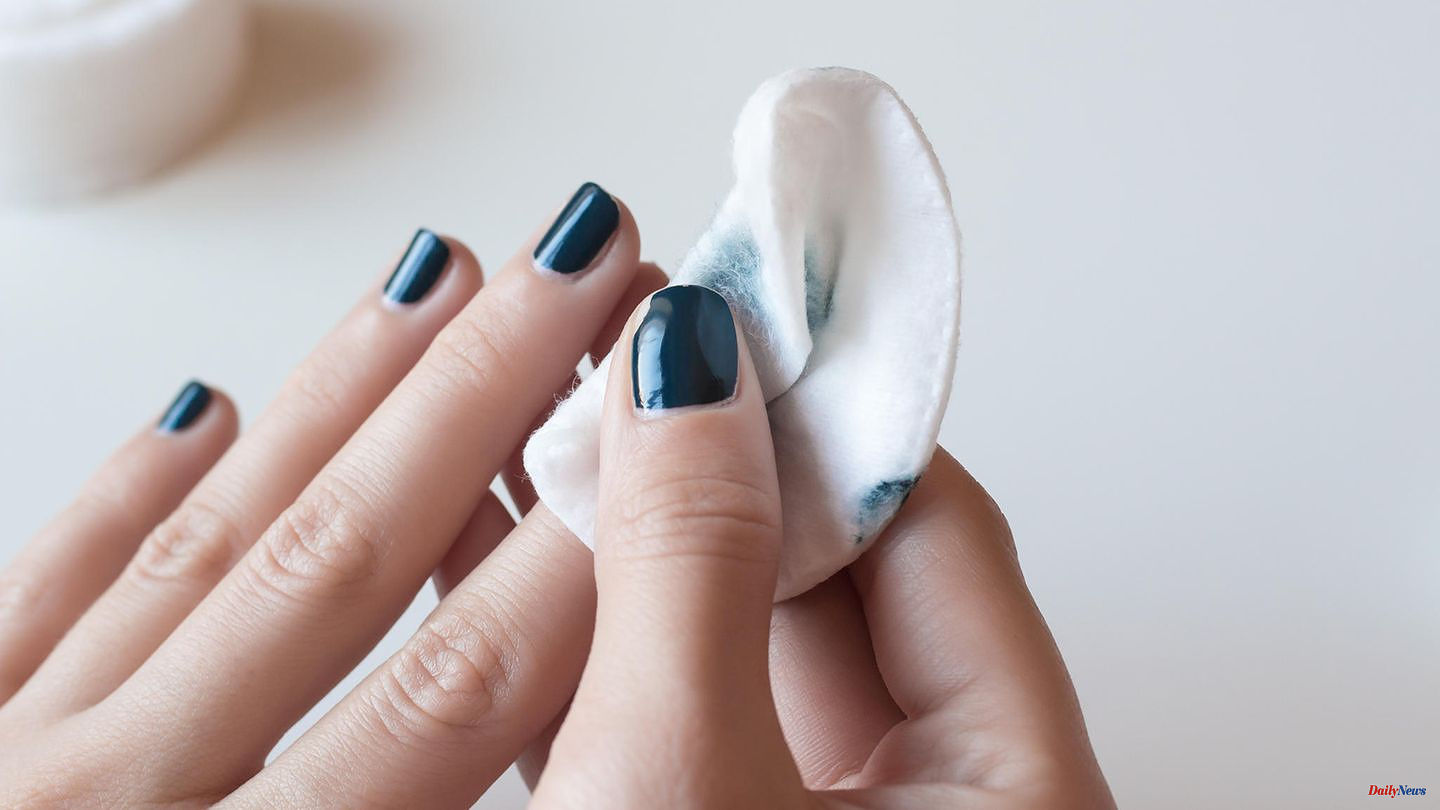The classic nail polish remover contains acetone, an extremely aggressive solution that is also used in car paint shops. So it shouldn't come as a surprise why the colorless liquid has become increasingly discredited in recent years: according to experts, it dries out the nails and cuticles with regular use, so that an acetone-free nail polish remover is the better choice. In the end, it doesn't matter whether it's liquid or in the form of pads. The only important thing is that you always work from the cuticles towards the nail tip - otherwise the paint residue will be pushed under the cuticles and can cause skin irritation there. If you would rather not use nail polish remover at all, there are many more ways you can remove nail polish. Read here what they are.
The following three are among the most well-known methods that can remove nail polish without acetone:
It may sound absurd, but nail polish can actually be fought with nail polish. Of course, the fresh coat of paint must not dry, otherwise the solvents contained in it will also harden. It is best to use a transparent top coat for this, as it dries out more slowly than normal nail polish. Remove the old layer along with the new (still liquid) layer by pushing both off the nail with a thin wooden spatula. Alternatively, you can also use a cosmetic tissue or cotton pad. Repeat the process until there are no more traces of varnish on the nail bed.
Note: If you prefer UV varnish or use special nail varnish that contains glitter particles, for example, there is usually no way around an acetone-containing nail varnish remover - since the methods mentioned unfortunately have no or hardly any noticeable effect.
This article contains so-called affiliate links. There is more information here.












